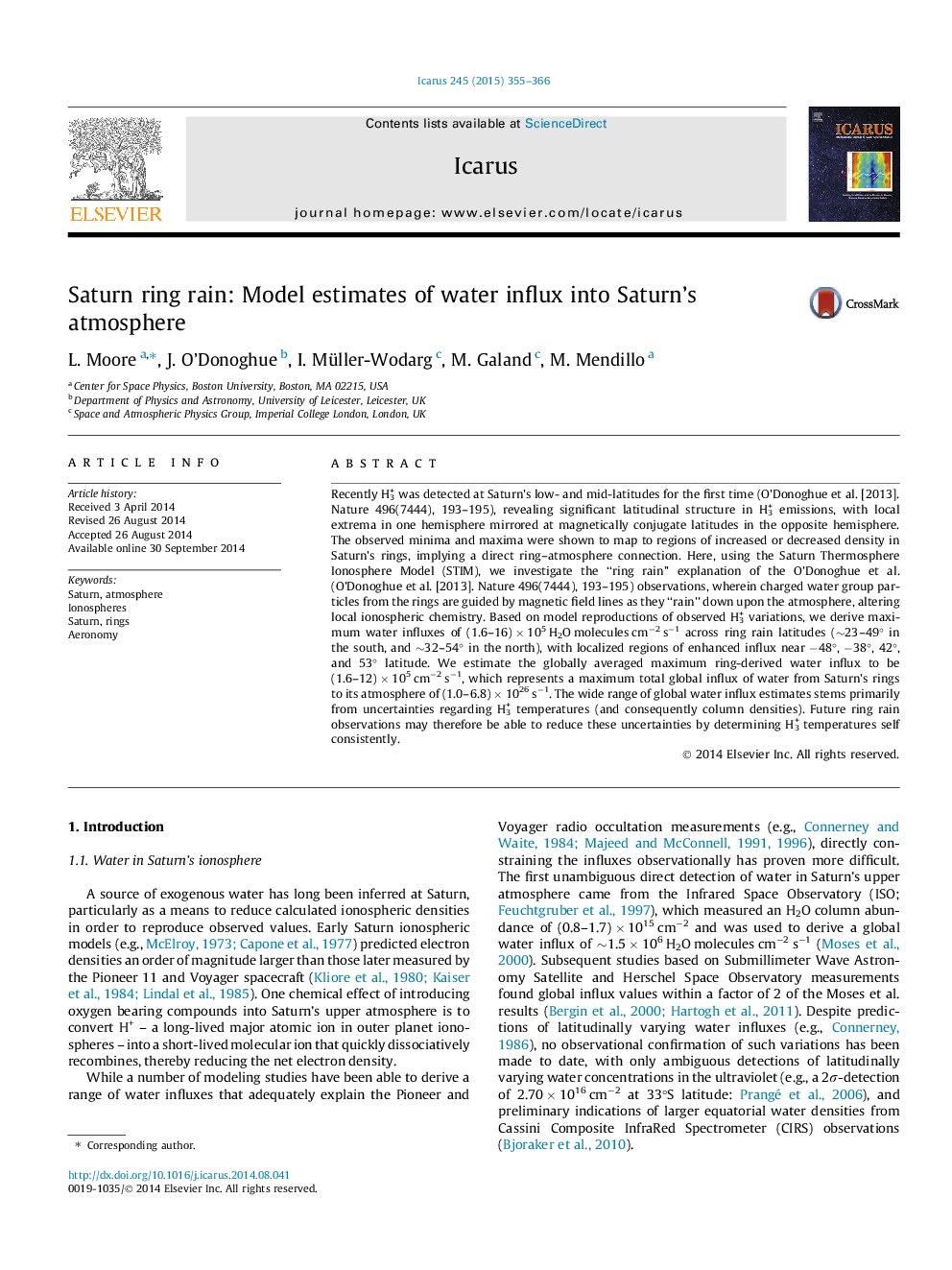| Article ID | Journal | Published Year | Pages | File Type |
|---|---|---|---|---|
| 8137504 | Icarus | 2015 | 12 Pages |
Abstract
Recently H3+ was detected at Saturn's low- and mid-latitudes for the first time (O'Donoghue et al. [2013]. Nature 496(7444), 193-195), revealing significant latitudinal structure in H3+ emissions, with local extrema in one hemisphere mirrored at magnetically conjugate latitudes in the opposite hemisphere. The observed minima and maxima were shown to map to regions of increased or decreased density in Saturn's rings, implying a direct ring-atmosphere connection. Here, using the Saturn Thermosphere Ionosphere Model (STIM), we investigate the “ring rain” explanation of the O'Donoghue et al. (O'Donoghue et al. [2013]. Nature 496(7444), 193-195) observations, wherein charged water group particles from the rings are guided by magnetic field lines as they “rain” down upon the atmosphere, altering local ionospheric chemistry. Based on model reproductions of observed H3+ variations, we derive maximum water influxes of (1.6-16) Ã 105 H2O molecules cmâ2 sâ1 across ring rain latitudes (â¼23-49° in the south, and â¼32-54° in the north), with localized regions of enhanced influx near â48°, â38°, 42°, and 53° latitude. We estimate the globally averaged maximum ring-derived water influx to be (1.6-12) Ã 105 cmâ2 sâ1, which represents a maximum total global influx of water from Saturn's rings to its atmosphere of (1.0-6.8) Ã 1026 sâ1. The wide range of global water influx estimates stems primarily from uncertainties regarding H3+ temperatures (and consequently column densities). Future ring rain observations may therefore be able to reduce these uncertainties by determining H3+ temperatures self consistently.
Related Topics
Physical Sciences and Engineering
Earth and Planetary Sciences
Space and Planetary Science
Authors
L. Moore, J. O'Donoghue, I. Müller-Wodarg, M. Galand, M. Mendillo,
